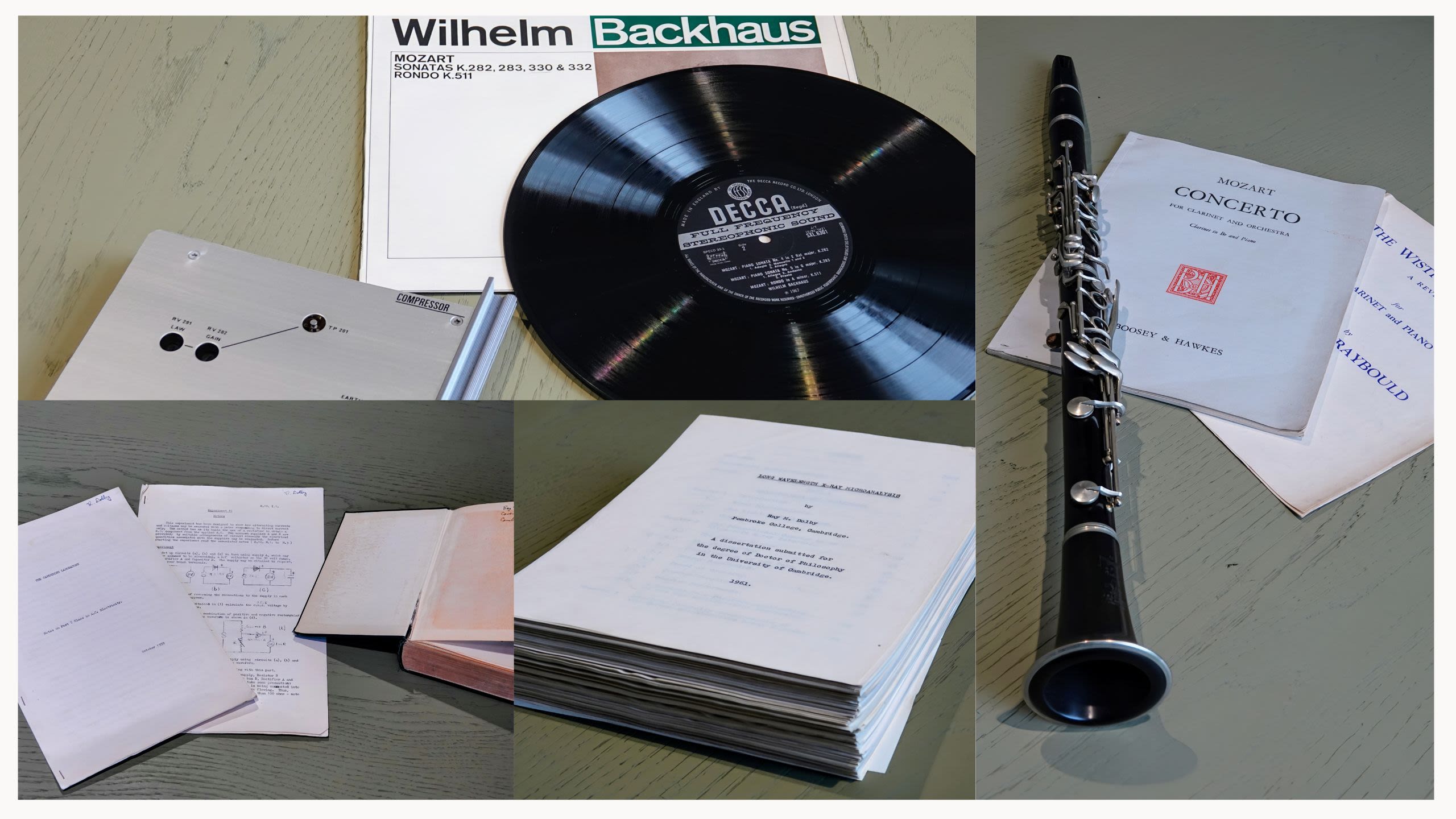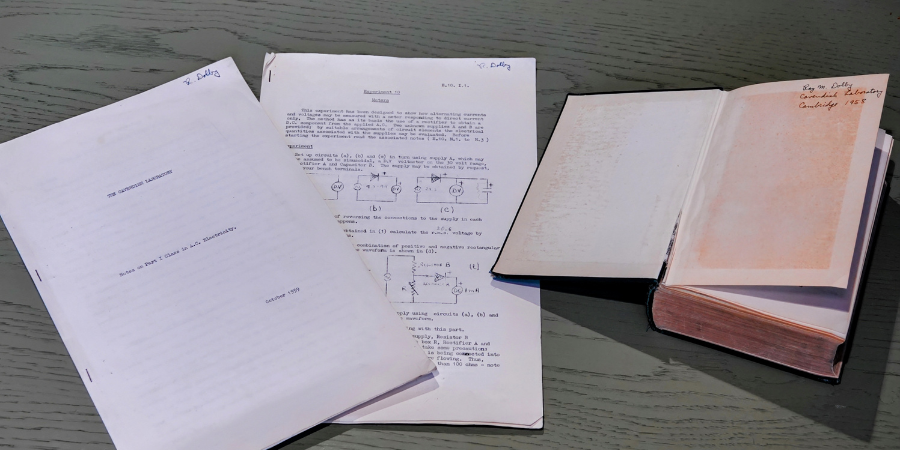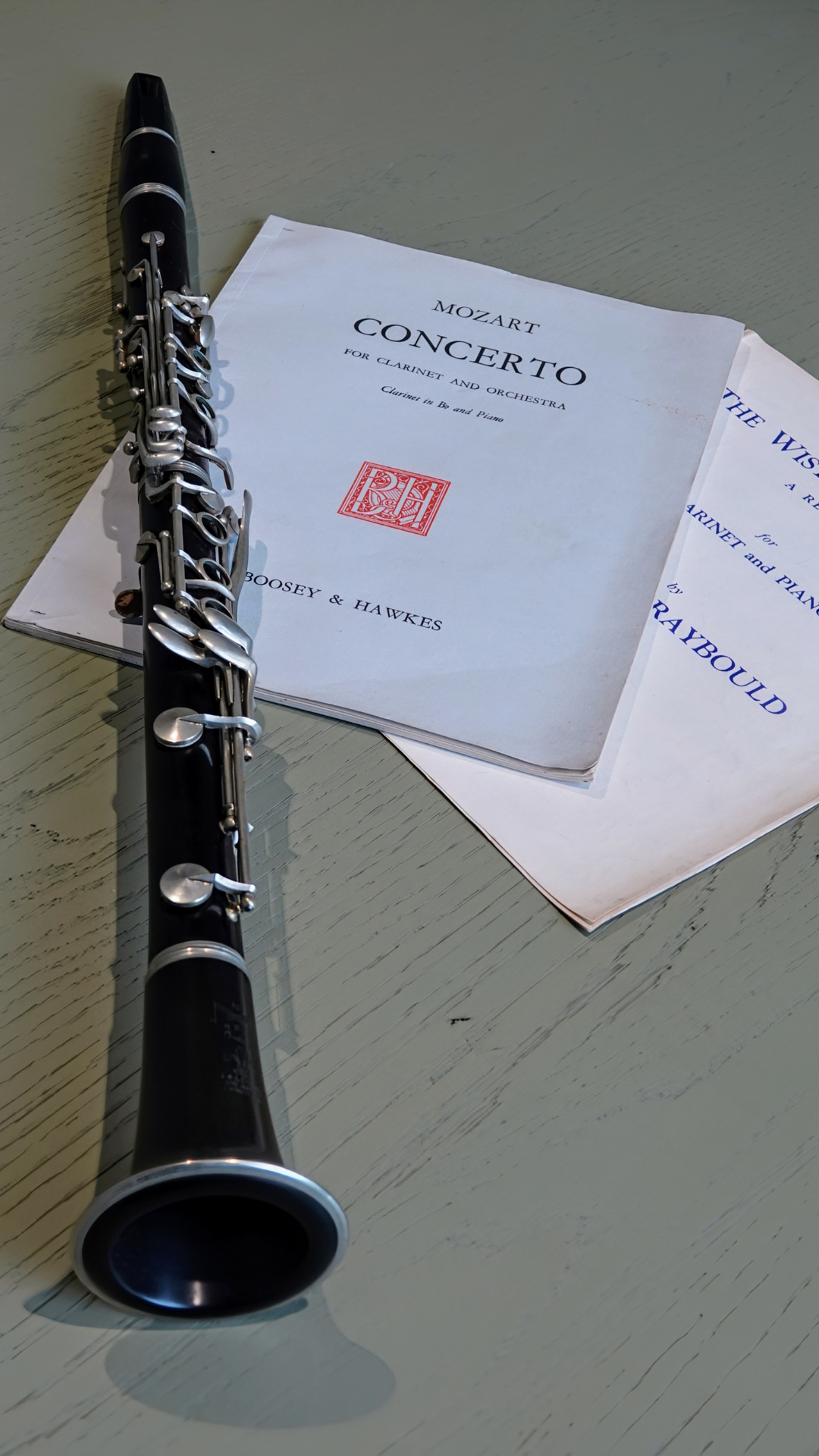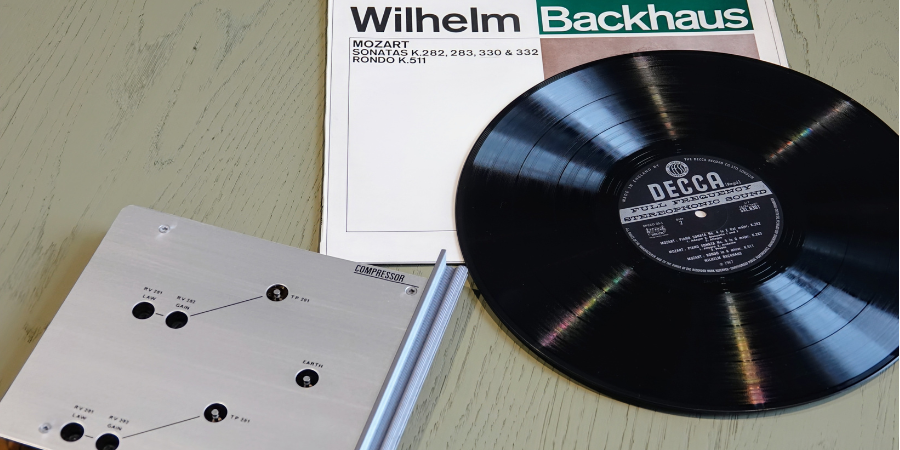The Dolby Collection arrives at the Cavendish

In February, a rather special delivery arrived at the Cavendish Laboratory from San Francisco, California: a collection of items donated by the Dolby family. This group of objects from the life and work of the American engineer and inventor Ray Dolby, will soon be put on display in the main entrance of the newly constructed Ray Dolby Centre as part of a memorial to the man whose legacy enabled the construction of the Cavendish’s newest building.
As a former Science Museum curator, few things give me more pleasure than delving into a box of historic artefacts, and this one contains some real treasures. The collection includes several examples of Dolby’s key inventions, alongside a number of more personal items that speak to his time at the Cavendish, as well as to his lifelong love of music.
Lab notes and dictionary
Lab notes and dictionary
The earliest items date from Dolby’s time at Cambridge as a Marshall Scholar from 1957 to 1961, when he was studying for a PhD in the Cavendish’s Electron Microscope Group under Ellis Cosslett. These include a copy of his hand-annotated notes from working as a demonstrator in the undergraduate practical classes on ‘A.C. Electricity’ in 1959, along with an Oxford Concise Dictionary bearing the inscription ‘Ray M. Dolby, Cavendish Laboratory, Cambridge, 1958’.
Capping off his time as a graduate student is his original unbound copy of his PhD dissertation titled ‘Long Wavelength X-Ray Microanalysis’. The theoretical analysis section of his dissertation is particularly notable as it shows Dolby’s developing interest in extracting signals from noisy backgrounds, the seeds of the ideas that he would use in developing the Dolby Noise Reduction system a few years later.

Clarinet and sheet music
Clarinet and sheet music
A more personal item in the collection is Ray Dolby’s clarinet, along with sheet music for pieces by Mozart and Clarence Raybould. Dolby had a keen interest in music, taking up the piano aged ten and playing clarinet in his school orchestra. He particularly enjoyed symphonic music and opera, and it was his love of music and fascination with audio recording that gave impetus to his work on noise reduction.
Completing the collection are a number of the key pieces of technology that Dolby developed at Dolby Laboratories, first in London in the 1960s and later in San Francisco. A standout item is an original A301 compressor board from Dolby’s first noise reduction system used in professional studio recordings. The technology, introduced in 1966, was quickly adopted by London-based Decca Records, who used Dolby’s Noise Reduction System for the first time to produce a recording of Mozart’s Piano Sonatas by Wilhelm Backhaus in 1967. Rather wonderfully, a copy of this historic record is included as part of the collection.
A301 Compressor circuit board and Wilhelm Backhaus record
A301 Compressor circuit board and Wilhelm Backhaus record
Together, these objects will provide a wonderful memorial to Ray Dolby’s life and work, which will be installed in the Ray Dolby Centre later this year.



